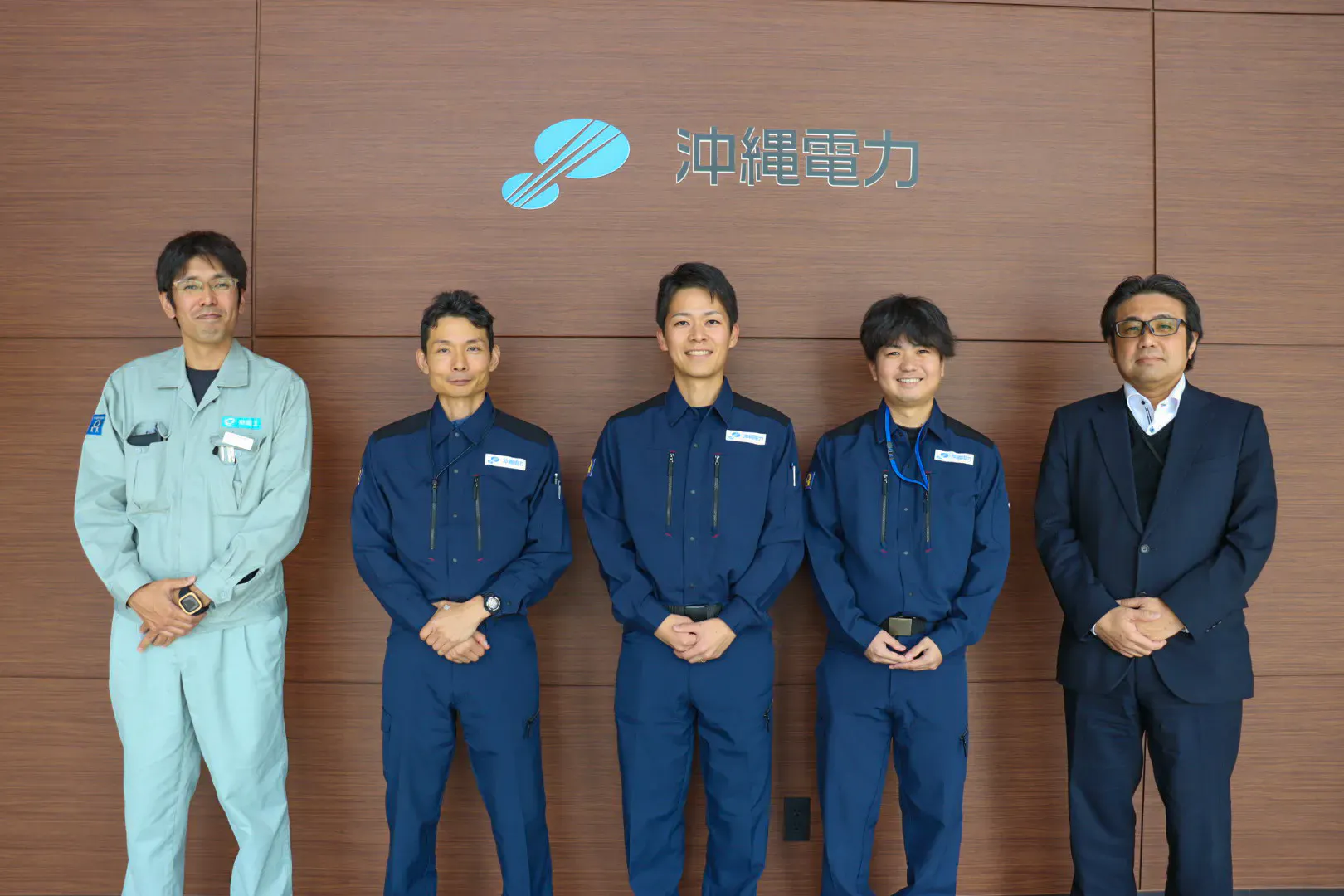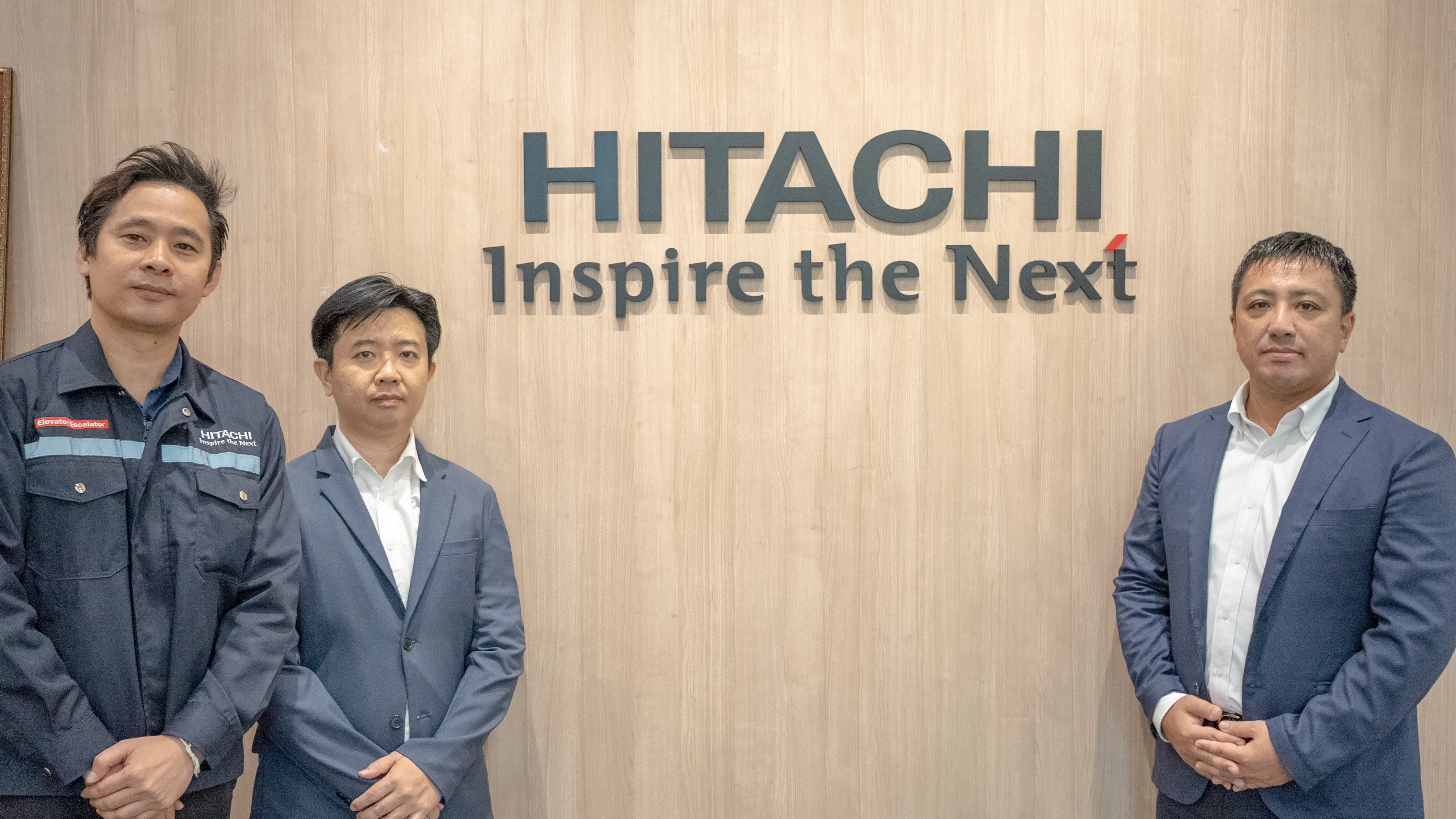Moving Away from Excel-Based Process Management: Driving Digital Transformation and Mindset Change Across All Stakeholders in Manufacturing
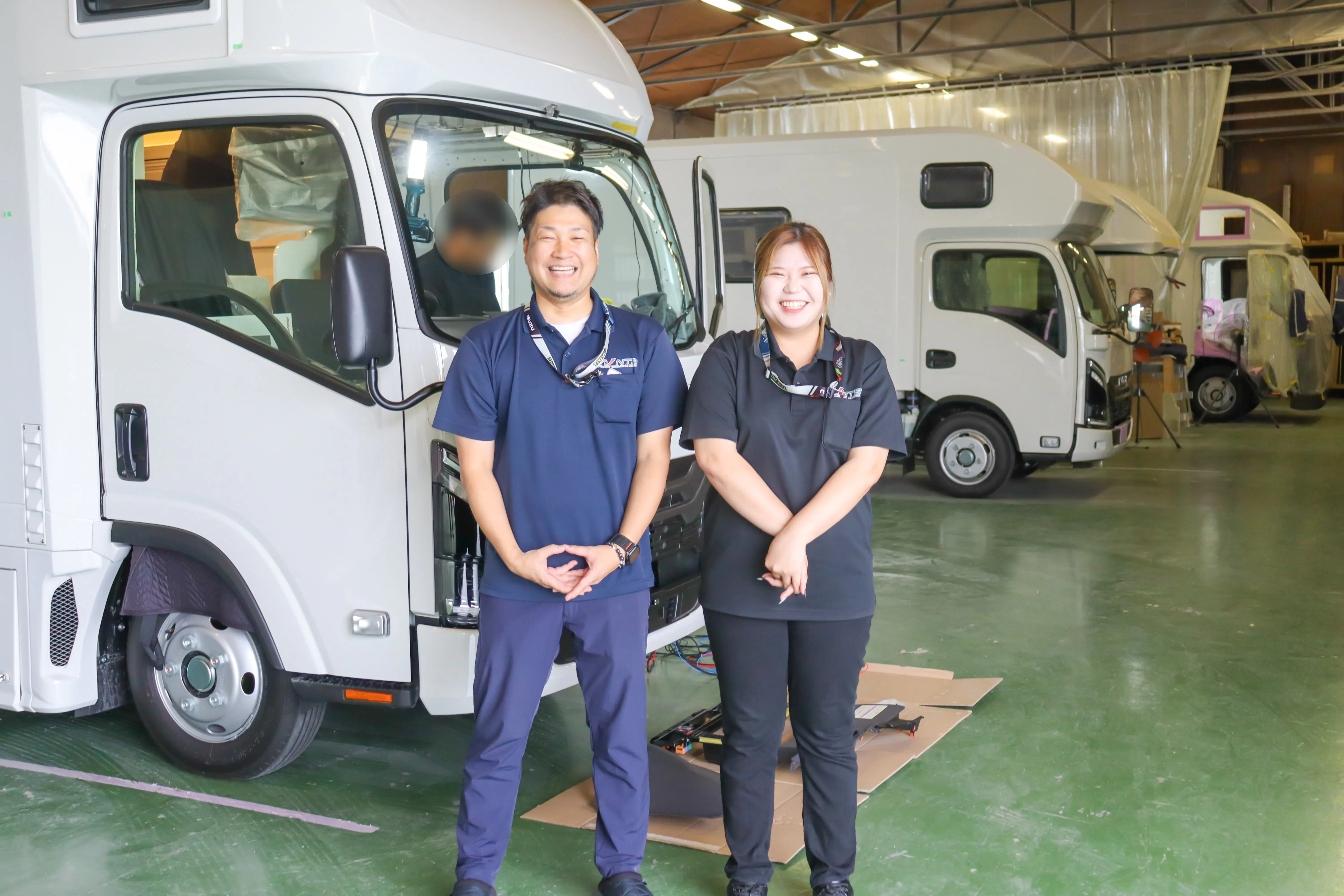

Company Name
Nippon Tokushu Body
Number of Employees
50
Business Activities
Camper van and specialty vehicle manufacturing & sales (including custom orders)
Utilization Services
Beyond Leisure: The Expanding Role of Camper Vans as Mobile Offices and Disaster Response Bases
Camper vans are gaining attention not only for leisure, but also as mobile offices and emergency shelters during disaster events. Nihon Tokushu Body Co., Ltd., a company specializing in the manufacturing and sales of these vehicles, continues to grow by leveraging its strengths in high safety standards and customization tailored to each customer’s unique needs.
However, behind that growth was a significant challenge — an overly complex and cumbersome process management system. Managing custom specifications for each customer in Excel proved difficult and time-consuming. Updates took too long, and as doubts grew about whether the “latest” Excel sheet reflected the current status, workers increasingly relied on verbal communication — leading to frequent cases of “he said, she said.”
To overcome these challenges, the company adopted KANNA. Through customizations that catered to both digital-native younger staff and veteran employees less familiar with digital tools, KANNA-use expanded across the organization. The result was not just operational improvement, but a shift in mindset — employees began to see their work from a broader perspective and think proactively.
In this interview, we spoke with Mr. Susumu Nakamura, Chief of the Process Management Group, and Ms. Nanami Noguchi from the same team, about the challenges that led to KANNA’s introduction, how it is being utilized today, and their vision for the future.
Background and Effects of KANNA Implementation
課題
- Updating complex Excel-based process schedules took a great deal of time, putting pressure on other tasks
- Lack of real-time information sharing led to inefficiencies, with teams relying on both spreadsheet updates and verbal communication
導入の決め手
- Overcame cost barriers: no initial fees and affordable monthly pricing
- Highly customizable: allowing no-code configuration tailored to the company’s own operations
- Comprehensive support, with a team that listens closely to customer feedback from the earliest stages of implementation
効果・改善
- Achieved greater visibility into each employee’s work, encouraging a shift in proactivity
- Simplified daily reporting through selectable input formats, leading to higher submission rates and smoother data utilization
- Used the photo upload feature to streamline operations—removing the need for manual data transfer, image sorting, or classification
Person interviewed

Mr. Susumu Nakamura
Chief, Process Management Group / Chief, Production Engineering Group
Ms. Nanami Noguchi
Process Management Group
Growing Demand for Camper Vans — The Ongoing Challenge of Complex Process Management
— To begin with, could you tell us about your company’s business?
Mr. Nakamura: Our main business is the manufacturing and sales of camper vans. Using Isuzu vehicle bodies as the base, we handle everything in-house — from design to the production of interior furniture. One of our greatest strengths is our ability to offer a high level of customization tailored to each customer’s needs.
Since our founding in 2014, the most important value we’ve upheld is safety. In addition to thorough inspections before delivery, we also provide maintenance services to ensure long-term safety.
While camper vans are often associated with leisure use, in recent years demand has been growing among corporations and government agencies as mobile offices, meeting spaces, and welfare-related public-use vehicles. They are also drawing attention as emergency shelters during disasters. Our EXPEDITION STRIKER model became the first camper van in Japan to receive the Phase Free Certification, recognizing its dual utility in both normal times and emergencies.
— As a company manufacturing camper vans with expanding demand from various sectors, what challenges were you facing?
Mr. Nakamura: The challenges were in process management, which Ms. Noguchi and I oversee. Previously, we managed everything in Excel, but process changes are inevitable in manufacturing — especially with custom-built vehicles, where each one has unique specifications. As a result, our Excel sheets became too complex to manage effectively.
Because of that complexity, updating the spreadsheets took a great deal of time, and Excel couldn’t support real-time information sharing. Delays in communication often caused inefficiencies in the factory. We had to physically go from the office to the workshop, relay the updates verbally, and then revise the spreadsheet afterward. Over time, workers began to think that “even if you look at the schedule, it might not reflect the latest information.” Although updating the spreadsheets was necessary to keep records, we also couldn’t eliminate verbal communication. This led to the inefficient double work of “verbal updates and spreadsheet maintenance,” which was a constant source of frustration.

The Support Team That Encouraged Implementation
— To address inefficiencies in process management, what led you to choose KANNA?
Mr. Nakamura: The key factor was the process scheduling feature. With KANNA, we could finally move away from managing schedules in Excel while also enabling real-time information sharing. The cost aspect was another major advantage. Developing a custom in-house system would have required enormous upfront costs. In contrast, KANNA required no initial fee and had reasonable ongoing costs, which made it much easier to get internal approval.
Another factor was its high level of customizability. At first, KANNA was introduced to us as a “construction management tool,” so we weren’t sure if it would suit our manufacturing operations. However, because KANNA allows for detailed customization of both settings and displayed items, we realized we could tailor it to fit our own workflows. Also, the KANNA support team that handled our initial inquiries were extremely kind and attentive. Their willingness to listen carefully to customer needs and provide hands-on support gave us the confidence to move forward with implementation.
Simple Mobile Reporting — Easy for All Staff
— After implementing KANNA, how have you been using it?
Mr. Nakamura: Since many of our on-site employees had grown accustomed to thinking that “the process schedule doesn’t always reflect the latest information,” we started by having them use KANNA’s reporting feature instead of the process chart. Our goal was to help them get comfortable with the tool gradually.
Previously, we had workers submit daily reports on paper, but we replaced that with electronic reporting through KANNA. When we were using paper forms, we didn’t have the time to aggregate all the data, so I think many employees questioned, “Does anyone even read these reports?”
Now, with KANNA, report contents are stored electronically and can be exported easily. This allows us to use daily reports as valuable operational data, helping employees see the purpose and value behind submitting them.
Ms. Noguchi: I’m a new employee — I joined about six months ago — and when I started, we were still using paper reports. Honestly, I was shocked: “We’re still doing this on paper?!” (laughs)
For people in my digital generation, using smartphones even for quick notes is completely normal. Outside of school, we hardly ever write by hand. So when we switched to KANNA’s reporting feature, I was honestly relieved! (laughs)
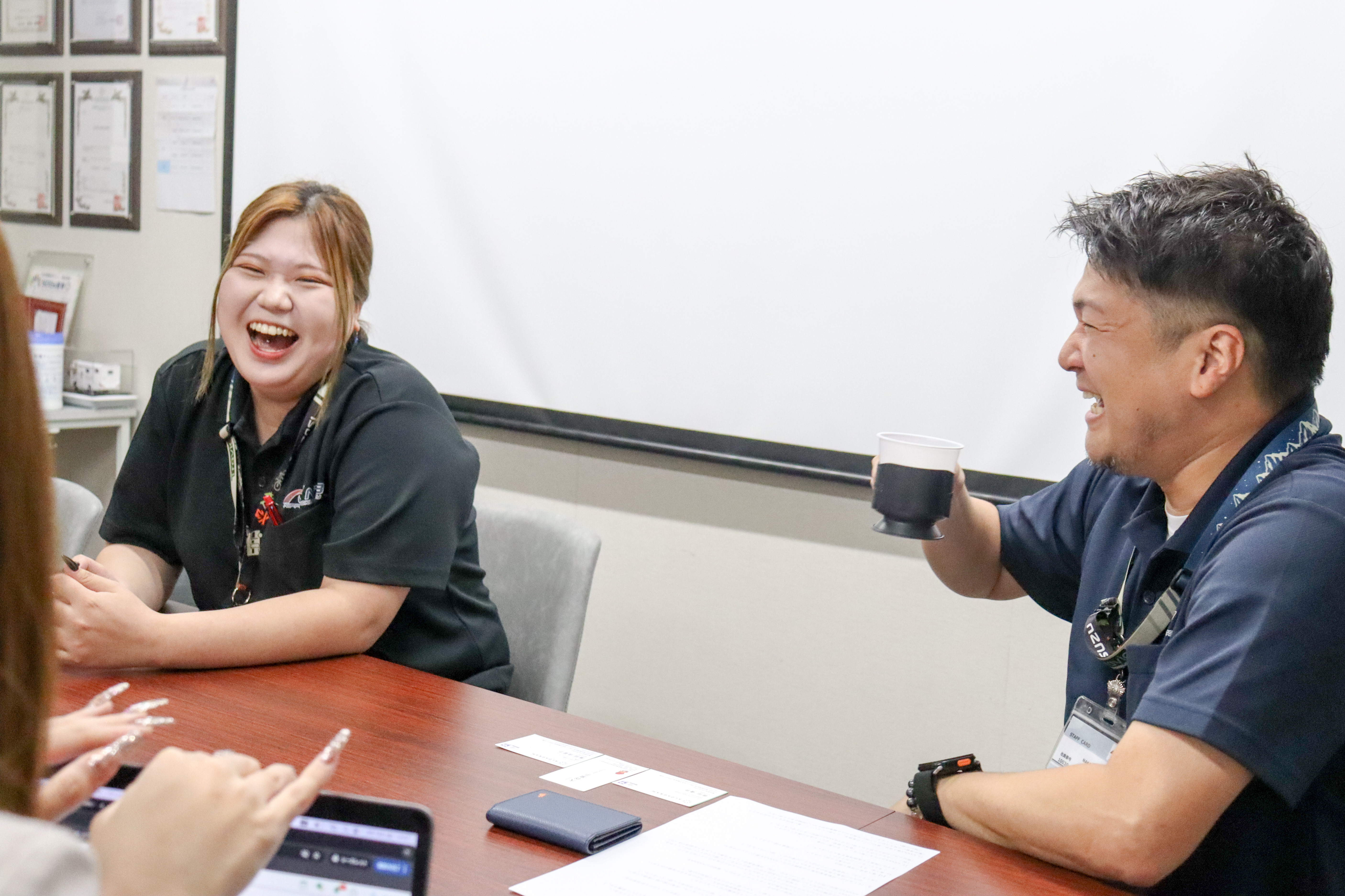
Mr. Nakamura: While we have younger, digitally capable employees like Ms. Noguchi, we also have staff members who are less comfortable with digital tools. That’s why we prioritized ease of use above all else when customizing KANNA.
We eliminated all text input and made every field selectable via drop-down menus. This way, even employees who aren’t used to smartphones—or who might find submitting daily reports tedious—can easily complete them. Thanks to these simple, drop-down-style reports that don’t burden users, everyone now submits their daily reports consistently.
The photo feature has also proven very useful. Previously, when collecting the “shells” (the living-space units) we outsourced for manufacturing, the staff in charge of pickup would take photos to check for scratches and send them by email to the manager. The manager then had to manually sort and save each photo into the appropriate customer folder. Since all pre-customization shells looked quite similar, it was difficult to identify which was which, and a lot of time was wasted on managing photo data.
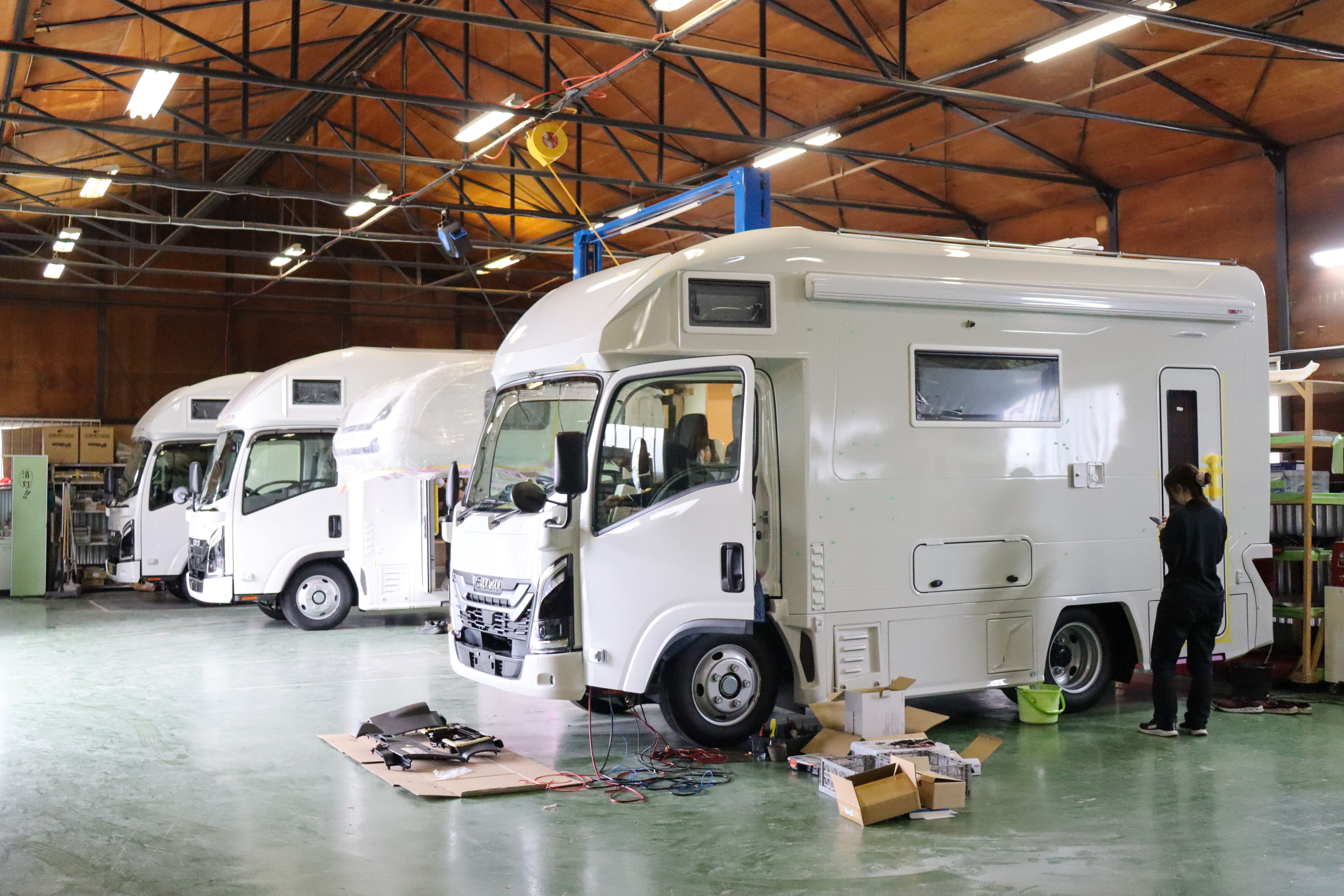
With KANNA, that entire process became seamless. By simply opening the relevant project and taking photos in real-time, the images are automatically saved and organized, eliminating the need for any manual sorting. The staff member in charge of taking these photos is in his late 50s, yet since the beginning he’s been using feature without any difficulty. Because he personally recognizes how convenient it is, the use of KANNA has naturally taken root within the team.
Encouraging Visibility and Ownership through Work Progress Tracking
— How has KANNA helped with the production schedule, which was one of the main reasons for its introduction?
Mr. Nakamura: We’re still in the process of trial and error, but we’ve created two types of templates—one for each vehicle and one for each customer—to manage our overall production process. For the “vehicle-based” template, Noguchi and I, as process managers, register the planned production schedule. Meanwhile, for the “customer-based” template, on-site employees enter the actual results, such as how many days each step took.
We separated the planning and results templates intentionally—to change the mindset of our employees. By having them record their own performance data, they can get a bird’s-eye view of how much time each task actually takes. This allows them to start thinking proactively—without waiting for directions from supervisors—about what improvements could shorten their work time.
Right now, we’re still in a transition period, updating both Excel and KANNA in parallel, and continuing verbal communication for schedule changes.
However, as KANNA becomes more widely used, I believe employees will naturally adopt the habit of checking the schedule themselves instead of asking others. Having each person record their own progress not only helps them gain perspective on their work, but also intentionally increases their opportunities to use KANNA.
Digitalization Is Key to Retaining Young Talent Combining Craftsmanship and Technology Through DX
— Lastly, could you share your expectations for the future and a message for other companies pursuing digital transformation?
Mr. Nakamura: What I expect most is for our employees to become more proactive. There’s only so much information we, as managers, can know. It’s the people on the ground who truly understand the production process. Our goal is for every employee to look at their work objectively and think, “This part could be improved.” That kind of proactive mindset is exactly what we hope to foster. And for us managers, it’s our responsibility to listen to those ideas and design a more efficient production process together.
KANNA has the potential to make that possible. Looking ahead, we hope to use KANNA not just for production management but also for customer management—so we can centralize information across departments. Currently, production and customer data are managed separately, which means we have to contact other teams whenever we need customer details. If both could be managed in one place through KANNA, all of our information would be consolidated, making it much easier to access what we need much like a "drawer for information".
Ms. Noguchi: I completely agree—KANNA really is like a drawer for information. Right now, our company is preparing to open a new factory in Vietnam, and Mr. Nakamura, who has been my main mentor, will be away on a long business trip. When I first heard that, I panicked—“Who’s going to guide me now!?” (laughs) But with KANNA, I feel reassured. By referring to the records and data already stored in KANNA, I can plan and manage processes on my own, without having to constantly contact my supervisor overseas.

Mr. Nakamura: Solving problems on your own without having to ask someone—that’s exactly the kind of workplace we aim for. It will take time for every employee to reach that level, but the KANNA team has been incredibly reliable in reaching that goal. I believe many companies are struggling with how to improve operational efficiency and advance DX, but what makes KANNA special is that their staff truly listen. They take our ideas seriously and always collaborate with us on best uses and customizations specified to our needs.
Right now, the entire manufacturing industry is facing a labor shortage. That’s why it’s essential for us to build an environment where younger employees feel it’s easy and rewarding to work. For younger generations, digital tools are a must. If we cling to analog methods, it will become even harder to attract new talent in the future. We need to create a foundation that supports both digital platforms for younger workers with considerations for those less familiar with technology. With the wide range of customizations and their strong support team, KANNA helps us pursue a practical and sustainable path toward true digital transformation.
Article published on: October 24, 2025
